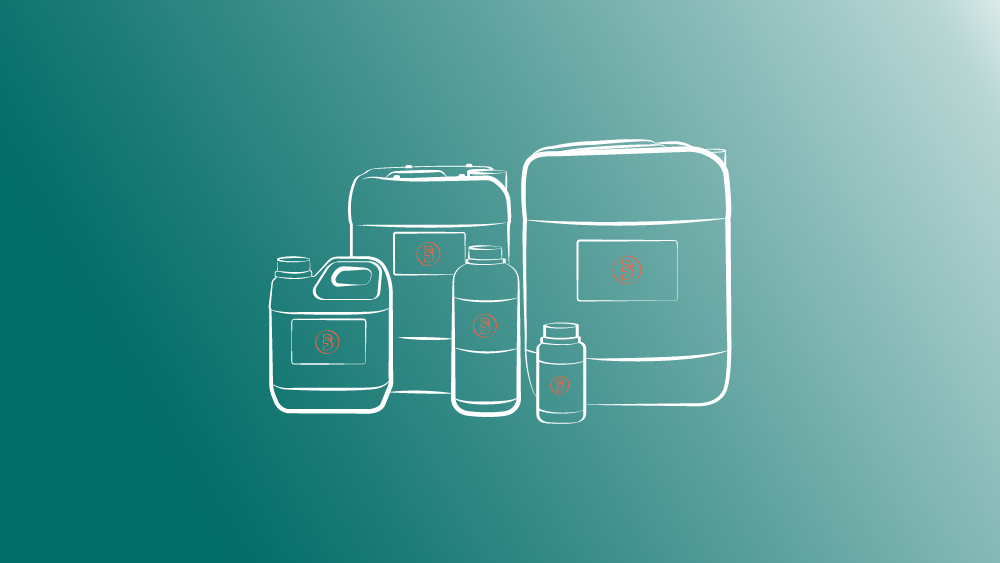Study of Chromatography Resin Storage
In biopharmaceutical downstream production processes, chromatographic purification has increasingly become an indispensable part, playing an irreplaceable role in improving product purity, impurity removal, and viral clearance. As the core component of these processes, the performance of chromatography resins directly affects product safety and efficacy, and conducting a robust resin storage study is the key step to ensure that the resin maintains stable performance during storage.
Why do we need to conduct storage studies for chromatography resins?
The purpose of a resin storage study is to verify the resin’s stability under the current storage conditions and to provide a scientific basis for defining storage conditions, shelf life, and re-test periods. Without an appropriate storage study, the resin’s performance may degrade; which might directly affect purification outcomes, thereby affecting drug-product quality and even safety and efficacy, and ultimately driving up manufacturing costs.
Regulatory requirements for resin storage studies
There is no single, unified regulatory standard for resin storage studies; however, because storage directly affects resin lifetime, multiple regulations and guidelines set forth relevant expectations. The core requirement is that storage studies must ensure stable resin performance throughout its period of use so as not to impact drug quality. The following regulations and guidance documents relevant to resin lifetime studies are provided for reference:
Table 1 Applicable Regulations, Guidance and Requirements for Chromatography Resin Lifetime Studies (Including Storage Studies)
|
Applicable Regulations and Guidance
|
Specific Requirements
|
|
FDA
|
Guidance for Industry:Process Validation: General Principles and Practices
|
Chromatography resin usage limits must be prospectively set
|
|
EMA
|
A CPMP position statement
|
Elimination of HCPs, in most cases, makes use of chromatographic columns for which the selectivity and yield of the procedures depend not only on the quality of the material but also on the way the columns are used and re-used.
|
|
GMP2023
|
Annex 2: Manufacture of Biological Medicinal Products for Human Use
|
Where intermediates can be stored for extended periods of time (days, weeks or longer), consideration should be given to including samples of the finished product made from the maximum permitted hold-time intermediates in the on-going stability programme.
|
|
Chinese Pharmacopoeia (ChP) 2025
|
General Theory of Recombinant Monoclonal Antibody Products for Human Use
|
Process validation shall at minimum address “acceptable limits on the re-use of purification materials (e.g., chromatography column resin).”
|
Supplier-Conducted Shelf-Life Studies for Chromatography Resins
Each supplier conducts shelf-life studies on the resin in accordance with its SOPs; typical approaches are shown in Table 2.
Table 2 Examples of Supplier-Conducted Shelf-Life Studies for Chromatography Resins
|
Storage condition
|
Unpacked condition
|
|
Resin selection
|
Unused resin
|
|
Shipping solution
|
A suitable shipping solution for the resin (e.g., 20% ethanol or 2% benzyl alcohol)
|
|
Sample aliquoting
|
Aliquot into an appropriate number of individual containers according to the testing frequency
|
|
Sampling plan
|
Follow the sampling frequency defined in the study protocol
|
|
Sampling method
|
Select one individual container and take a sample directly for testing
|
|
Test items
|
As specified in the study protocol: e.g., visual and microscopic inspection, routine testing, and performance testing as needed (e.g., particle-size distribution, binding capacity, pressure–flow characteristics, ligand density), as well as microbiological limits and bacterial endotoxins
|
|
Validation lots
|
Three different lots of resin
|
|
Acceptance criteria
|
In accordance with the applicable quality standard
|
Resin Storage Studies Conducted by Biopharmaceutical Manufacturers
Although chromatography resin suppliers may provide data on storage duration, as well as the antimicrobial and antifungal effectiveness of the shipping solution, additional storage validation studies are still required. This is primarily because the supplier’s storage data are generated using new, unused resin stored under unpacked conditions.
In most biopharmaceutical manufacturing processes, the chromatography resins being stored are typically used rather than new, and are often preserved directly in-column. Therefore, resin storage validation should take such practical conditions into account. In the early stages, storage studies were relatively simple and largely based on supplier recommendations and user experience. With the advancement of the biopharmaceutical industry—particularly the continuous strengthening of GMP requirements—resin storage studies have become increasingly systematic and scientifically structured.
An example of an operational approach for chromatography resin storage validation is shown below.
Table 3 Example of Chromatography Resin Storage Validation
|
Storage condition
|
Unpacked condition
|
Packed condition
|
|
Resin selection
|
Resin that has been used for ≥10 cycles
|
|
Shipping solution
|
The storage solution actually used by the manufacturer for the resin
|
|
Sampling and Testing
|
T=0
|
Take a direct sample and test for bioburden, bacterial endotoxins, and functional performance as needed (e.g., DBC, ligand density, particle-size distribution, or pressure–flow characteristics).
|
1、Before packing: take a sample and test for bioburden, bacterial endotoxins, and, where applicable, functional performance (e.g., DBC, ligand density, particle-size distribution, or pressure–flow characteristics).
2、After packing: test column efficiency. Flush the column with equilibration buffer, and once the effluent pH and conductivity are consistent with the equilibration buffer, collect the effluent for bioburden and endotoxin testing.
|
|
Change of shipping solution
|
1、Before changing the shipping solution, collect a sample of the resin in its pre-change condition and designate it as the T=0 sample, then test in accordance with the approved sampling plan.
2、After sampling, replace with fresh shipping solution.
|
1、Before changing the shipping solution, flush the column with equilibration buffer; once the effluent pH and conductivity match the equilibration buffer, collect the effluent for bioburden and bacterial endotoxins testing.
2、Unpack the column; resuspend the resin in equilibration buffer and take a sample for functional performance testing.
3、Repack the column; after reconfirming column efficiency, replace with fresh shipping solution.
|
|
Validation runs
|
Perform three shipping-solution changeovers.
|
|
Acceptance Criteria
|
Acceptance criteria for bioburden and bacterial endotoxins may follow the supplier-provided standards or site-defined limits.
Acceptance criteria for functional performance testing should align with the release analytical ranges established for new (unused) resin.
For resins whose performance is affected by the number of uses (e.g., Protein A affinity resin), compare against the T=0 data; results within ±20% of the T=0 value are acceptable.
|
Although specific practices for resin storage may vary among different companies and suppliers, several fundamental industry-wide consensus points have been established:
1. Resin storage strategies should be based on scientific research and experimental data rather than subjective judgment.
2. Conducting resin storage studies requires cross-functional collaboration among departments such as R&D, manufacturing, and quality management.
3. It should be recognized that resin storage validation is an integral part of the process validation lifecycle and must be continuously confirmed and optimized throughout routine use.
Considerations for Resin Storage Studies
Key points to note when conducting resin storage studies:
1. Conduct studies under conditions representative of actual storage (including temperature, humidity, and light exposure).
2. Define a justified sampling and testing frequency based on resin characteristics, storage mode (unpacked and/or in-column), and historical data.
3. Establish scientifically justified acceptance criteria.
4. Maintain comprehensive documentation (protocol, data, and results) to support regulatory submissions.
5. Ensure any changes to storage conditions during the study are assessed and approved through formal change control.
References
[1] FDA “Guidance for Industry:Process Validation: General Principles and Practices”
[2] EMA “CPMP Position Statement on DNA and Host Cell Proteins (HCP) Impurities, Routine Testing Versus Validation Studies,” CPMP/BWP/382/97
[3] PDA Technical Report No.60-3: Process validation: A lifecycle approach Annex 2: biopharmaceutical drug substances manufacturing. Parenteral Drug Association: 2021
[4] General Theory of Recombinant Monoclonal Antibody Products for Human Use, Part III, 2023 Edition of the Chinese Pharmacopoeia.









.png)


